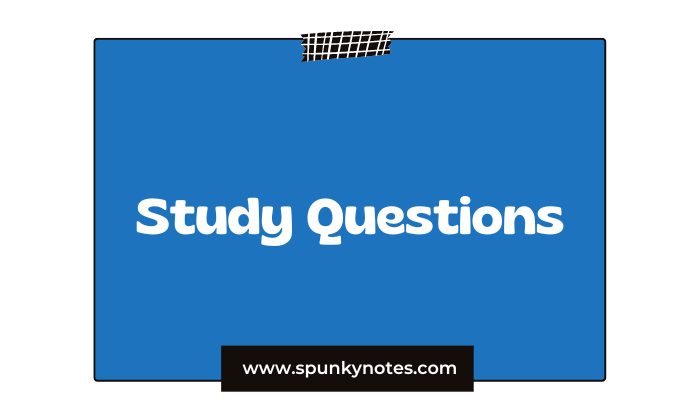The Waste Land MCQs
1. From which classical work does the epigraph of The Waste Land come?
A. Virgil’s Aeneid
B. Ovid’s Metamorphoses
C. Petronius’ Satyricon
D. Dante’s Inferno
2. In Petronius’ Satyricon, what does the Sibyl wish for?
A. Eternal youth
B. Riches and power
C. To die
D. To be queen
3. What does the Sibyl symbolize in Eliot’s use of the epigraph?
A. Immortality with endless joy
B. Endless life without renewal or meaning
C. The triumph of Christian faith
D. Fertility in spring
4. Why did Eliot dedicate The Waste Land “to Ezra Pound, il miglior fabbro”?
A. Pound created the title
B. Pound edited and shaped the draft
C. Pound financed its publication
D. Pound translated it into Italian
5. Where does the phrase il miglior fabbro originally appear?
A. Dante’s Purgatorio
B. Homer’s Iliad
C. Virgil’s Georgics
D. Shakespeare’s Hamlet
6. In Dante’s Purgatorio, who is called “il miglior fabbro”?
A. Petrarch
B. Arnaut Daniel
C. Boccaccio
D. Guido Cavalcanti
7. How many sections does The Waste Land have?
A. Three
B. Four
C. Five
D. Six
8. Which section of The Waste Land is titled “The Burial of the Dead”?
A. First
B. Second
C. Third
D. Fifth
9. What is the title of the fifth and final section of The Waste Land?
A. What the Thunder Said
B. The Fire Sermon
C. Death by Water
D. A Game of Chess
10. Which short section of The Waste Land features Phlebas the Phoenician?
A. The Fire Sermon
B. Death by Water
C. A Game of Chess
D. The Burial of the Dead
11. Which blind prophet from Greek mythology appears in the poem?
A. Tiresias
B. Oedipus
C. Cassandra
D. Orpheus
12. Which mythical figure associated with fertility myths underlies the poem?
A. The Fisher King
B. Theseus
C. Persephone
D. Heracles
13. The line “April is the cruellest month” is an inversion of which earlier poet’s view?
A. Wordsworth
B. Chaucer
C. Milton
D. Shelley
14. The line “O O O O that Shakespeherian Rag” echoes a song from which Elizabethan dramatist?
A. Marlowe
B. Shakespeare
C. Ben Jonson
D. Middleton
15. Which Eastern text is quoted in the poem’s closing lines?
A. The Upanishads
B. The Quran
C. The Tao Te Ching
D. The Bible
16. What is a central theme of The Waste Land?
A. Industrial progress
B. Cultural fragmentation and spiritual barrenness
C. Celebration of Victorian values
D. Praise of the English countryside
17. Which recurring motif symbolizes destruction and renewal?
A. Fire
B. Water
C. Air
D. Earth
18. What does the repeated Sanskrit word “Shantih” mean?
A. Truth
B. Peace
C. Life
D. Silence
19. What literary technique is most dominant in the poem?
A. Allegory
B. Pastoral
C. Allusion and collage
D. Epic simile
20. Which war heavily influenced the poem’s imagery?
A. Napoleonic Wars
B. Crimean War
C. World War I
D. World War II
21. In the famous opening line of the poem, which month is paradoxically declared to be the cruellest?
A. March
B. May
C. April
D. October
22. According to the speaker, what specific flower does April breed out of the dead land?
A. Snowdrops
B. Lilacs
C. Daffodils
D. Roses
23. What two abstract human faculties are described as being mixed and stirred by the arrival of Spring?
A. Pain and pleasure
B. Memory and desire
C. Hope and fear
D. Life and death
24. In contrast to the cruelty of Spring, what element of Winter is said to have kept the inhabitants warm?
A. Forgetful snow
B. Dried tubers
C. Heavy blankets
D. Hot coffee
25. The speaker recalls a past summer experience. Over which specific German lake did this surprising summer shower occur?
A. The Thames
B. The Starnbergersee
C. Lake Leman
D. The Mediterranean Sea
26. After stopping for a coffee in the colonnade, to which public garden did the speakers go for a walk?
A. The Hofgarten
B. London Bridge
C. The Metropole
D. The Hyacinth garden
27. The character speaking the German phrase “Bin gar keine Russin…” claims to be originally from where?
A. Russia
B. Germany
C. Lithuania
D. Poland
28. What is the name of the woman who recounts the memory of the childhood sled ride with her archduke cousin?
A. Belladonna
B. Lil
C. Marie
D. Sibyl
29. According to Marie’s recollection of her childhood, where does she state that one feels a sense of freedom?
A. In the Hofgarten
B. In Lithuania
C. In the mountains
D. In the south in winter
30. The poem uses a biblical prophetic voice to address a figure as “Son of man.” To whom is this solemn address most likely directed?
A. T. S. Eliot
B. The reader
C. Stetson
D. The Sibyl
31. The speaker tells the ‘Son of man’ that he knows only “A heap of broken images” where what climate condition prevails?
A. The wind blows cold
B. The sun beats
C. The rain falls hard
D. The fog settles
32. In this desolate landscape, what does the dead tree fail to provide?
A. Fruit
B. Flowers
C. Shelter
D. Wood
33. In the land of dry stone and no water, what sound is conspicuously absent?
A. The sound of the cricket
B. The sound of the wind
C. The sound of water
D. The sound of thunder
34. The speaker invites the ‘Son of man’ to find shadow and shelter under what specific object?
A. Under the black rock
B. Under the dry stone
C. Under the red rock
D. Under the dead tree
35. The speaker promises to show the ‘Son of man’ something different from his shadow, a famous phrase which is:
A. Fear in the desert
B. Fear in a broken image
C. Fear in a handful of dust
D. Fear under the red rock
36. The German quotation from Wagner’s opera, “Frisch weht der Wind…”, asks about the location of whom?
A. The Sibyl
B. Mein Irisch Kind (My Irish child)
C. Marie
D. The drowned sailor
37. In the subsequent memory of a failed romantic encounter, who is the unnamed speaker known as?
A. Belladonna
B. Marie
C. The hyacinth girl
D. Madame Sosostris
38. After returning late from the Hyacinth garden, the speaker describes himself as being in what existential state?
A. Tired but content
B. Neither living nor dead, knowing nothing
C. Frightened, holding on tight
D. Full of memory and desire
39. The desolate German phrase “Oed’ und leer das Meer” is a quotation related to which classical story adapted into an opera?
A. Tristan und Isolde
B. The Odyssey
C. The Aeneid
D. The Tempest
40. The clairvoyant, Madame Sosostris, is described as being the wisest woman in what part of the world?
A. Asia
B. America
C. Europe
D. London
41. What specific tool did Madame Sosostris possess for her clairvoyant readings?
A. A crystal ball
B. A wicked pack of cards
C. Tea leaves
D. A magic mirror
42. Which card does Madame Sosostris first identify as belonging to the person whose fortune she is telling?
A. Belladonna
B. The Hanged Man
C. The one-eyed merchant
D. The drowned Phoenician Sailor
43. Which specific phrase, a quote from Shakespeare’s The Tempest, is used to describe the sailor’s transformation?
A. He passed the stages of his age and youth.
B. Those are pearls that were his eyes.
C. Fear death by water.
D. He who was living is now dead.
44. Who in the Tarot reading is identified as “The Lady of the Rocks, The lady of situations”?
A. Marie
B. Mrs. Equitone
C. Belladonna
D. Lil
45. Besides the sailor and Belladonna, which other figures from the cards are named by Madame Sosostris?
A. The Hanged Man and The Tower
B. The man with three staves and the Wheel
C. The one-eyed merchant and The Fool
D. The Hanged Man and the Blank Card
46. Which important card from the Tarot pack does Madame Sosostris explicitly state she is unable to find?
A. The Wheel
B. The Hanged Man
C. The one-eyed merchant
D. The drowned Phoenician Sailor
47. Based on the card reading, what specific and ominous warning does Madame Sosostris give?
A. Beware of the Hyacinth girl
B. Fear death by water
C. Avoid the Hofgarten
D. Stay away from London Bridge
48. In her vision, what does Madame Sosostris see large crowds of people doing?
A. Walking round in a ring
B. Flowing up and down a hill
C. Stumbling in cracked earth
D. Waiting for the rain to fall
49. To which one of her clients does Madame Sosostris offer to bring the horoscope herself?
A. Lil
B. Mrs. Porter
C. Mrs. Equitone
D. Belladonna
50. What two-word descriptive name is given to the modern urban setting that appears after the fortune telling?
A. Unreal City
B. Falling Towers
C. Withered Stumps
D. London Town
Brief Overview
The Waste Land is a long, influential poem by T. S. Eliot. It was published in 1922 and is considered one of the most important works of Modernist literature. The poem shows the despair and confusion of European civilization after the trauma of World War I.
The poem is broken into five distinct sections. It uses many different voices, languages, and literary allusions, which makes it complex and difficult to read. The central theme is the sterility and lack of meaning in modern life, symbolized by a spiritual “waste land.”
The narrator introduces many characters and scenes that show this decay. These include a depressing pub scene, a rich woman bored with her marriage, and a typist having a dull sexual encounter. Sex is presented as mechanical and joyless, not life-giving.
The poem is deeply concerned with the failure of human relationships and religion. Eliot constantly contrasts the empty present with stories of spiritual vitality from the past. He includes figures from mythology and literature, like the Fisher King and Tiresias.
In the final section, the poem turns toward a slight possibility of redemption. It includes lines from the Hindu Upanishads, such as “Datta” (Give), “Dayadhvam” (Sympathize), and “Damyata” (Control).
The poem ends with the fragmented phrase, Shantih shantih shantih, suggesting a final peace that is hard to reach.


